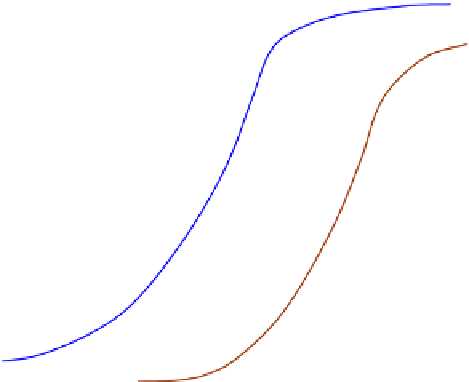Biomedical Engineering Reference
In-Depth Information
(a)
Correlating the data with the logistic equation, determine the carrying capacity,
and carrying capacity coefficient.
(b)
Consider that glucose is the only substrate for the product (ethanol) generation
while some glucose also consumed for the cell growth. Correlate the ethanol
product rate with Monod model. Determine the specific maximum product
formation rate, saturation coefficient, and the yield factors YF
P/S
and YF
X/S
.
11.12.
Production of a secondary metabolite has been characterized using a small batch
reactor, and the kinetic data are shown in
Fig. P11.12
. You are to design a reactor to
produce 5 Mg/year of the product P. Batch production mode is chosen based on the
approved drug production method. Identical reaction conditions (same seed culture
concentrations, pH, and temperature) will be used as those for generating the data in
Fig. P11.12
. Experience is that for each batch of operations, there are 2 h additional time
needed for reactor loading, preparation, unloading after reaction, and reactor cleaning.
Determine the minimum reactor size required for this production.
FIGURE P11.12
8
1.6
7
1.4
6
1.2
1.0
5
0.8
4
X
P
3
0.6
0.4
2
0.2
1
0
0
0
2
4
6
8
10
12
14
16
18
t
, h
11.13.
The production of biomass is actually desired for the case of
Fig. P11.12
. Batch
production mode is chosen based on the approved drug production method. Identical
reaction conditions (same seed culture concentrations, pH, and temperature) will be
used as those for generating the data in
Fig. P11.12
. Experience is that for each batch of
operations, there are 2 h additional time needed for reactor loading, preparation,
unloading after reaction, and reactor cleaning. Determine the maximum production
rate for biomass.































































Search WWH ::

Custom Search